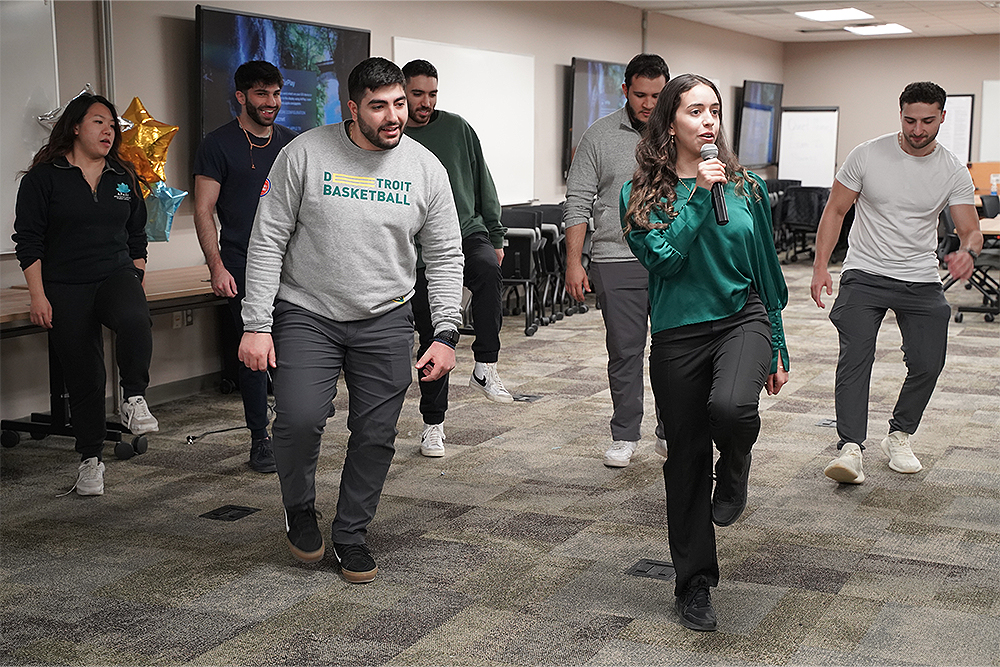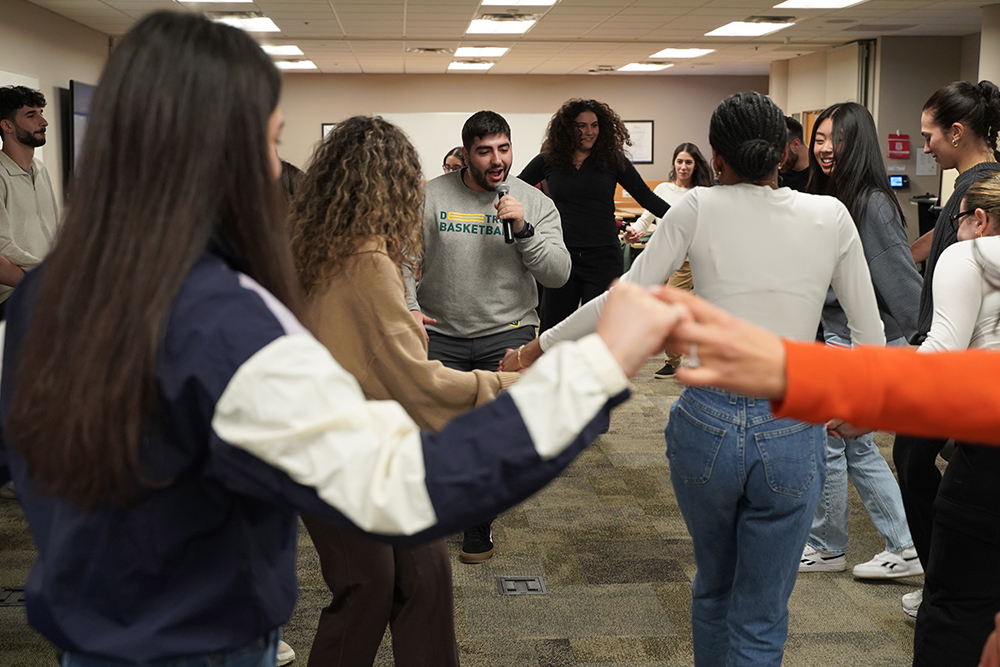
Three student organizations from OUWB along with one from Wayne State University School of Medicine recently collaborated on a fun-filled event to celebrate Middle Eastern dances and culture.
The event was held Feb. 16 and hosted by OUWB’s EviDance-based Medicine (EDM), Lebanese American Medical Student Association (LAMSA), and National Arab American Medical Association (NAAMA). The Wayne State University School of Medicine chapter of NAAMA also co-hosted.
“Teach Me How to Dabke,” taught students traditional Middle Eastern dances such as Dabke and Bagiya — dances considered relatively easy to learn and at the root of plenty of smiles.
“(Dabke) is something everyone can learn, and it's universal. There’s no barrier to dance,” said Deena Sukhon, M2, OUWB EDM vice president and NAAMA president.
Two medical students — and choreographers — Sukhon, and Michael Nunu, M1, president, WSU’s NAAMA chapter, led the event. |
Two medical students — and choreographers — Sukhon, and Michael Nunu, M1, president, WSU’s NAAMA chapter, led the event.
“Dance is a great way to unite and acknowledge differences,” said Nunu. “We bring everyone together smiling, laughing, getting to know each other, and de-stress.”
Sukhon and Nunu met in undergrad at the University of Michigan, as members of an Arab dance troupe called Arabesque. They were elected to become choreographers, where they then created dance numbers and put on shows for family and students.
Even though they now attend separate medical schools, it was an opportunity to reconnect and share their love of their culture with others.
“We have a NAAMA chapter at Oakland, and we have a NAAMA chapter at Wayne, so we wanted to bring the med schools together,” said Nunu.
According to Sukhon, in Arabic cultures, dance is important as a way of celebration and connection, but especially “resilience.”
“It's a symbol of just trying to make sure that your culture is not erased or forgotten, and it's a great way for us to teach it because it can be easy,” she said.
Nunu leads the group during the dance event. |
“I hope they gain the confidence in saying that they are Arab-American,” she added. “People just want to be themselves alone, and then want to be someone else with everyone else. But exploring your culture, background, and heritage is important for your own mental health and identity.”
Maya Jaradi, M2, vice president and treasurer, LAMSA, said such events really “hit home.”
“Growing up, it wasn’t easy to be open about my culture,” she said. “It's important that we have these events so that people who aren't familiar with our backgrounds can come to this relaxed setting, learn more, and have a lot of fun with it.”
Participating students said they had a fun time connecting with other classmates they might not know well, all under the ideals of celebrating other cultures as future physicians. Along with the ideals of building connections and networks that will help strengthen the relationship between them and build compassion as future physicians.
“We’re trying to build a community of strong-willed and collaborative Arab physicians that can treat patients in Michigan and across the country,” said Nunu. “Having those connections across campuses will help foster that.”
Students said it also helps to gain new perspectives and empathy with future patients to give the best care possible.
“It’s worthwhile as medical students to learn about different cultures,” said Jardhi. “Say if you encounter someone in a clinic that has that background. You can connect over something like, ‘Hey, I actually learned your cultural dance at this event.’ It’s nice to find something to bond with your future patients over.”
Attendees said they enjoyed and appreciated the event.
“It would have been very cool to have this in my undergrad,” said Silvana Iskandar, M2. “There weren’t any organizations like that.”
“It was a great event because I'm Arab myself. It was fun to learn the dances,” said Sam Wesamalmasri, M2. “That was something completely new to me.”
To request an interview, visit the OUWB Communications & Marketing webpage.
This work is licensed under a Creative Commons Attribution-NonCommercial 4.0 International License.



